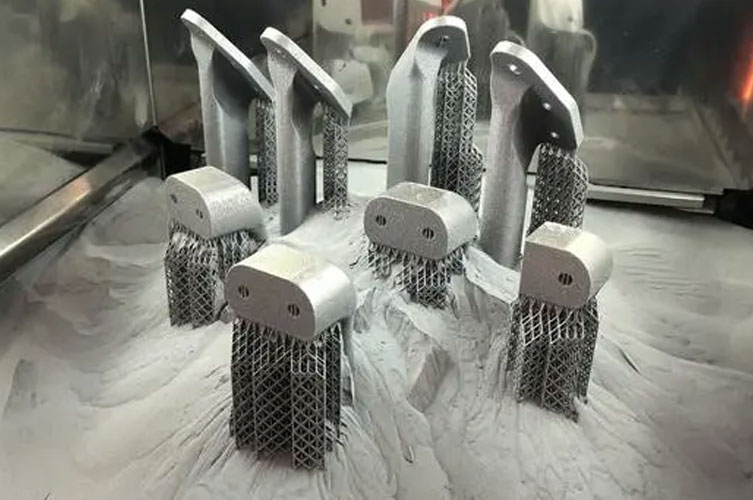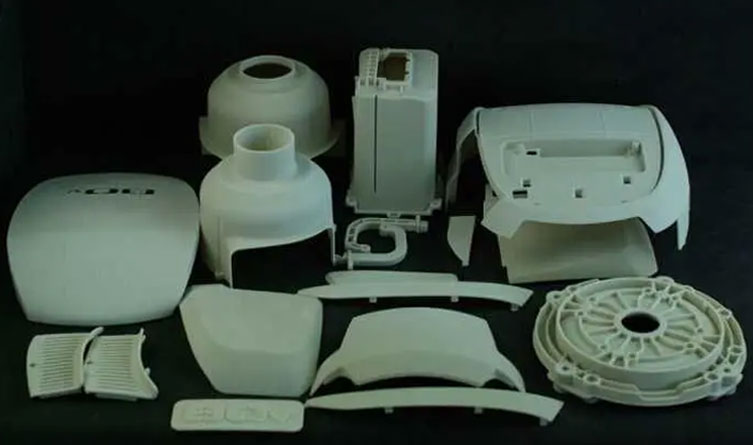In the past, home appliance molds were repeatedly cut and polished by machine tools. Due to the high precision requirements, the manufacturing time of each mold was about one month. Moreover, companies spend a lot of money on the production of molds every year. Some large home appliance companies invest hundreds of millions in mold development every year. If there is an effective technical means to reduce the cost of home appliance mold manufacturing, it must It will become the gospel of the industry. The 3D printing technology is just a supplement to the traditional manufacturing process. Its gradual maturity may provide a shortcut for the production and manufacturing of home appliance companies.
3D printing technology is widely used in the home appliance industry, but the most widely used is in the research and development stage of home appliances. The research and development process generally includes structural design, prototype production, structural verification and product function verification. At present, vacuum cleaners, washing machines, refrigerators, etc., which are designed in the market, mostly rely on 3D printing technology in the early design. First, the art engineer draws the two-dimensional graphics of the product on the drawing board; then, the worker master follows the design on the drawing board, scans it with a scanner, and uses the scanned data to carry out physical modeling design, that is, industrial free; then, the sample is printed by the printer. parts printed out; final assembly and inspection of prototypes

Using a 3D printer can quickly see the final design effect of the product, which can avoid the trouble of overthrowing and starting over if the mold development made an occasional mistake in the past. If the effect is not good, it can be corrected in time, and there will be no waste of resources. It takes tens of thousands or even hundreds of thousands of yuan to develop a set of molds. With 3D printing, the product development costs of enterprises can be greatly reduced
Specifically, 3D printing technology can be used in the R&D and design of exterior and structural parts of home appliances and injection molds. At present, 3D printing technologies for the home appliance industry mainly include SLA, FDM, and SLS, but only individual applications need to be combined with customer needs. SLA technology is suitable for appearance parts, and the performance of assembly verification is poor: FDM technology has poor accuracy, and the surface of the printed sample is not smooth enough; SLS technology is the most widely used in the industrial field, and its surface smoothness is slightly inferior to that of SLA technology, but its mechanical Good performance and good assembly verification.

The Development Of 3D Printing Appliance
Nowadays, electronic and electrical products are very common. Consumers’ requirements for the use of electronic products are constantly improving, including product performance, appearance, and use characteristics.
The continuous upgrading of products poses a very serious challenge to the R&D department.
As the most advanced single-piece production process at present, 3D printing technology can provide great help in the research and development stage of electronic and electrical products, including assembly verification, function verification, appearance test, ergonomics, rapid prototype, rapid mold, etc. , which greatly saves the R&D cost and time cost of the manufacturer.
3D Printing For Appliance
3D printing is now widely used. Many companies will choose 3D printing models to verify the design. What are the advantages of this technology? Wonder Tech will list the following points for you:
- Advantage 1: 3D printed models take up no space and are portable to manufacture. In terms of space per unit of production, 3D printers have a much greater manufacturing capacity than traditional manufacturing machines. In contrast to an injection moulding machine, for example, which can only produce items much smaller than itself, a 3D printer can produce items as large as its print table. 3D printers are set up so that the printing device can move freely and the printer can produce items even larger than itself. The higher production capacity per space makes 3D printers suitable for home or office use, as they require less physical space.
- Advantage 2: 3D printed models are manufactured with zero skill. Traditional craftsmen need to be apprentices for several years to acquire the required skills. Batch production and computer-controlled manufacturing machines have reduced the skills required, however traditional manufacturing machines still require skilled professionals to adjust and calibrate the machines. 3D printers take various instructions from the design files and require fewer operator skills than injection moulding machines to make the same complex items. Unskilled manufacturing opens up new business models and can offer people new ways of producing in remote environments or in extreme situations.
- Advantage 3: Precise physical reproduction of 3D printed models. Digital music files can be copied endlessly with no loss of audio quality. In the future, 3D printing extends digital precision to the physical world. Scanning and 3D printing technologies will work together to increase the resolution of morphological transformations between the physical and digital worlds, and we can scan, edit and replicate solid objects to create exact copies or optimise originals.
- Advantage 4: Reduced waste by-products. Compared to traditional metal manufacturing techniques, 3D printers produce fewer by-products when manufacturing metal. The amount of waste associated with traditional metal processing is staggering, with 90% of raw metal being discarded on the factory floor. 3D printing produces less waste when manufacturing metal. With advances in printing materials, ‘net-shape’ manufacturing could become a more environmentally friendly method of processing.
- Advantage 5: Unlimited combinations of 3D printed model materials. Combining different raw materials into a single product is a difficult task for today’s manufacturing machines, which cannot easily combine multiple raw materials during cutting or mould forming. With the development of multi-material 3D printing technology, we have the ability to fuse different raw materials together. Previously unmixable raw materials will be mixed to form new materials in a wide variety of shades with unique properties or functions.
We Provide World-class Appliance 3D Printing Services
Wonder Tech is dedicated to providing game-changing solutions- high-performance solutions and faster 3D Printing Appliance services with flexible designs.
We have brought nearly 20 years of materials and manufacturing expertise to every layer of your 3D products to help you in unlocking every dimension of 3D printing techniques.
- Design discussion and presentation: In the early stage of product design, it helps to realize cross-departmental design communication, which not only saves time, but also reduces design defects,
- Assembly and functional testing: to achieve the goal of improving product functions, reducing production costs, better quality, and increasing market acceptance
- Making mold prototypes: Even if multiple prototypes are made, the cost is not high, which can speed up the delivery cycle, reduce the price of personalized customization, improve the quality of product delivery, increase production efficiency, and accelerate the progress of product launch. Samples can be used for promotional display, market research, trial sales, etc.
Household appliances are necessary for people’s daily life, common ones include air conditioners, refrigerators, washing machines, stereos, vacuum cleaners, electric fans, electric kettles, coffee pots, rice cookers and various small appliances. Facing the highly competitive market environment, more and more household appliance manufacturers are using 3D printing technology to print and make prototypes of similar household appliances to measure efficiency.
Medical Instrument Rapid Prototype Making
Prototype production of medical instruments:
1. 3D Printing Manufacturing: Under the instruction of the program, the 3D printer makes the prototype by 3D printing with light-curing resin.
2. Manual Grinding: After 3D printing, there will be some support left on the surface of the prototype, which needs to be smoothed with sandpaper to make the surface of the prototype look smoother.
3. Oil Spraying: Spray a layer of paint on the surface of the prototype to make the appearance of the prototype more exquisite.
4. Pad Printing: Use a pad printing machine to print logo or text on the prototype panel.
5. High Gloss: Spray a layer of UV varnish on the surface of the prototype plate to make the surface of the prototype plate of medical instruments look brighter.
Automotive Parts Rapid Prototype Making
Cross-border technology integration, diverse selection of materials, and complete printing processes enable us to provide customers with the ability to customize, whether it is personalized decorations, display items, footwear, or cultural and creative supplies or office gift.
In addition to basic requirements such as price and performance, the market also puts forward requirements for product appearance and personalized design. This requires manufacturers to focus on product iteration speed and novel designs. 3D printing enables the development of the consumer goods industry to have the ability to diversify, personalize and speed up, endowing ornaments with a new look and new vitality; the application of 3D printing technology is undoubtedly a magic weapon for display manufacturers, and can help manufacturers in While satisfying the personalized customization of customers, it can reduce the development cycle, reduce the development cost and improve the product performance.
Household Appliances Rapid Prototype Making
3D printing household appliances prototype model does not take up space, portable manufacturing. In terms of unit production space, compared with traditional manufacturing machines, 3D printers have stronger manufacturing capabilities. For example, an injection molding machine can only make objects much smaller than itself, whereas a 3D printer can make objects as large as its print bed.
The prototype model is not only for viewing, but also to test whether the model can truly meet the most accurate ideas of customers. Because the prototype model can be combined and assembled, it can intuitively reflect whether the component structure is reasonable or not, and the difficulty of installation. In order to find the problem early, so as to solve the problem.
Prototype is a key role for enterprises in the stage of research and development of new household electrical appliances. New household electrical appliances will more or less have some design deficiencies. You can find out the deficiencies in product design through prototypes and improve them. 3D printing prototypes You can solve this problem.
Digital Communication Rapid Prototype Making
In general, if digital products are to be mass-produced, you need to make a few prototypes for testing first, so that you can avoid spending a lot of time and money on mold repair and modification in the process of mold opening in the future. Generally, smart bosses do not In order to save the seemingly small and costly proofing fee, the small loss is worth the big money. Similarly, if you want to mass-produce gamepads, you can make several gamepad prototypes to see whether the appearance and internal and external structures of the product are reasonable and whether the product is feasible.
